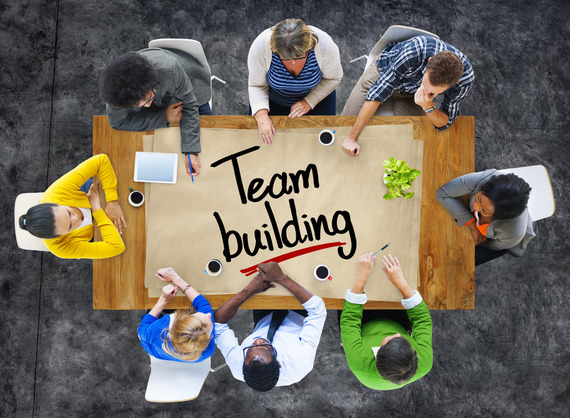A few years ago Google became interested in their team building operations. Can a perfect team ever be built, they wondered. They put together a vast amount of data on every team inside Google. The initial hypothesis they had is that you can make better teams by blending the right people together.
In other words, the perfect team would have excellent personal dynamics and interactions.
But after years of study and work, there appeared to be no correlation between team members and team effectiveness. The Google researchers had to go back to the old drawing board, and started over by looking at the team concept differently: If it wasn't the team member's personalities that make or break a team, what does make or break it?
The researchers were now looking at group dynamics as a whole, instead of individual dynamics. This allowed them to discount what a team member's personality was like outside of the team -- whether he/she was shy or outgoing, aggressive or passive, etc.
And that is when researchers discovered their first clue: every team, every group, develops their private set of informal rules, which all members are expected to follow. The closer everyone goes along with these unofficial rules, the better the team functions.
There's a name for this. It's called high social sensitivity.
A lot of this high social sensitivity is through nonverbal cues, through body language. Someone who sits at the conference table with her arms crossed and looking down while an idea is being discussed is probably not into that particular idea -- and she needs to be sounded out about her reasons for not wanting to go along with the idea. This concept of a social bond that gives each member a say and a feeling of inclusiveness is just as important in the larger world of seminars and conventions. Remember that at your next marketing conference, of which there are 100s in 2016 alone.
According to Google's research, teams with high social sensitivity, where all feel an equal ability and responsibility to speak up and let their opinions and observations be known, are more efficient than teams where a rigid and vertical hierarchy is in place. These teams may seem to an outsider to be taking too much time to reach a consensus and get going on a project, but time lost in hearing everyone out is made up in the efficiency of their teamwork once they do get going.
Teams that feel comfortable with each other and have a high level of trust with one another tend to function better at goal completion than teams where competition and criticism are rampant. Team building activities are a proven method of building trust and comfort in a team. And a team that functions well together is a happy team -- which, in turn, can mean that its members will stay with the company longer than those who are experiencing too much stress from team dysfunction.
Feeling safe with one another holds a team together like superglue.
An example of this principle could be made with the early success and ensemble work of the television show Saturday Night Live.
The producer Lorne Michaels had a potential powder keg on his hands when dealing with so many fame-hungry entertainers. To keep them in harness long enough to produce an original comedy show each week took dedication, discipline, and above all else, the patience to listen to his crew of comedians and validate their ideas and feelings. In other words, he created a safe haven of sorts for his bunch of zanies.
According to several of the early participants in SNL, Michaels ran the writing sessions with the actors present as a sort of group therapy session. If someone was having a 'bad joke day', Michaels didn't get upset, not outwardly; instead, he invited the person who was struggling to share what was going on with the group. And the understanding was that the group would not belittle that person's experiences or feelings. Maybe they didn't go as far as giving a group hug, but everyone in that session would let the 'problem child' know that he or she was just as valuable (and funny) as always.
Were these meetings long? Yes. Were they productive? Well, you just have to look at the first few seasons to see what kind of phenomenal talent Michaels was able to nurture and put on display.
Bottom Line
Hopefully your team is not quite as full of so many frenetic egos as Lorne Michaels had to deal with (and still deals with). The important thing to take away from this backstage peek at SNL is that everyone does have an ego, big or small and that ego needs a bit of stroking and encouragement from time to time to function well in a team unit. When everyone on the team is secure in the knowledge that their input is just as valuable as everyone else's and that their contribution(s) will be acknowledged whether they are implemented or not, you've got a group that can give SNL a run for its money!
